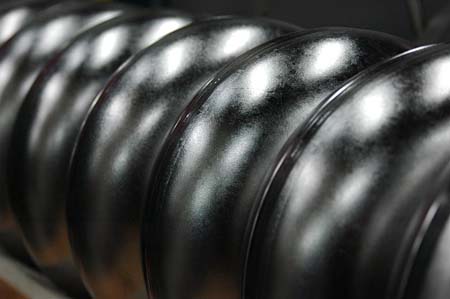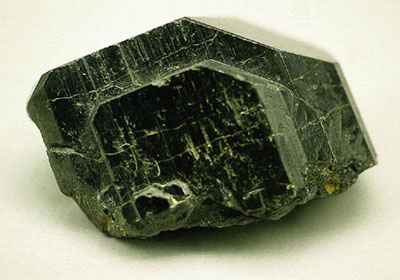niobium

Figure 1. A niobium cavity resonator, part of a superconducting linear accelerator. Source: DESY.

Figure 2. Columbite. Credit: Smithsonian Institution.
Niobium (Nb) is a soft, silvery-white, rare metallic element in group VB of the periodic table. Niobium is a transition element. It occurs as columbite (niobium was also formerly known as columbium) and pyrochlore. It was first discovered in 1801.
Niobium is unreactive and corrosion-resistant, and is used in steels, high-temperature alloys, and superconducting alloys (Figure 1). Being permeable to neutrons, it is also used in nuclear reactors. At high temperatures it reacts with nonmetals to give pentavalent covalent compounds. Its most common isotope is 93Nb (100%).
| atomic number | 41 |
| relative atomic mass | 92.9 |
| relative density | 8.57 (20°C) |
| melting point | 2,477°C (4,491°F) |
| boiling point | 4,744°C (8,571°F) |
Columbite
Columbite (Figure 2) is a lustrous black oxide mineral of iron, manganese, and niobium [(Fe, Mn) Nb2O6]. It is the chief ore of niobium and is found in granite pegmatites mainly in Western Australia, Zaire, Madagascar, and South Dakota. Tantalum replaces niobium in all proportions up to 100% (tantalite). Columbite crystallizes in the orthorhombic system, forming prismatic crystals with one distinct cleavage. Hardness 6.0 to 6.5. Relative density 5.2 (columbite) to 8.0 (tantalum).


